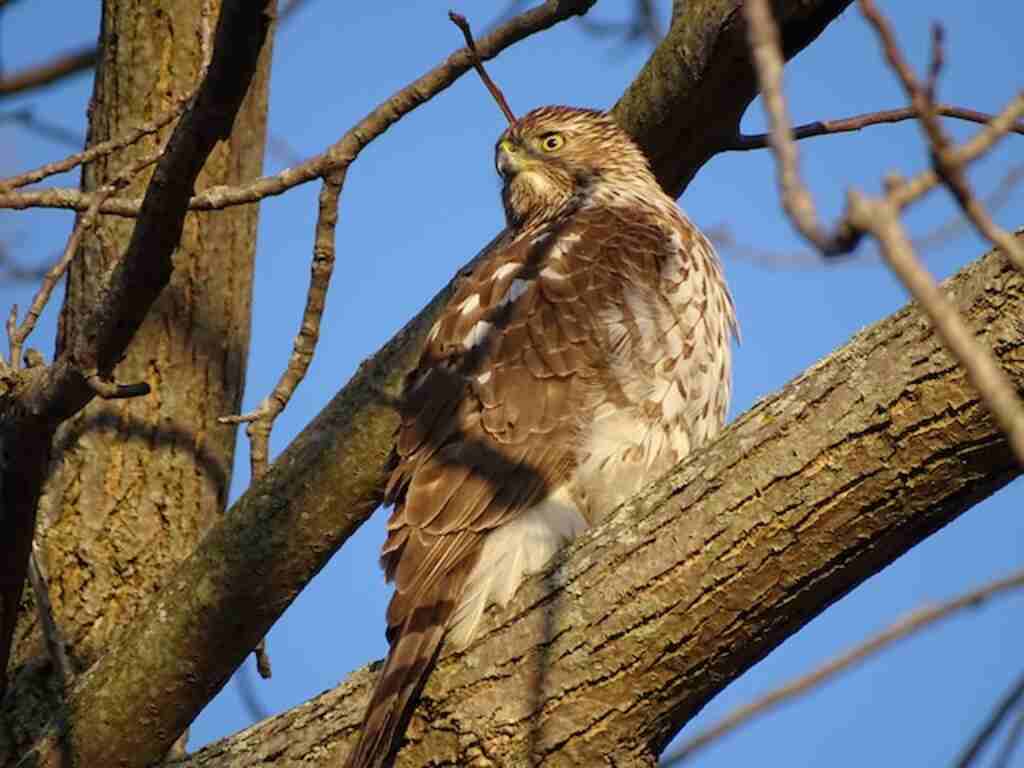Do hawks eat turtles? The short answer is… well, it’s not as straightforward as you might think! Picture a hawk swooping down, ready to feast on a turtle like it’s the main course. But hold on!
Before we dive into the wild world of hawk-turtle encounters, let’s uncover the surprising truth and explore the fascinating reasons behind it. Get ready for a shell-shocking revelation!
Table of Contents
- 1 The Basics of Hawk Diet
- 2 Turtles as Prey for Hawks
- 3 The Pros and Cons of Eating Turtles for Hawks
- 4 Rare Occurrences: When Hawks Do Eat Turtles
- 5 Conclusion
- 6 Summary on whether hawks commonly eat turtles
- 7 Final thoughts on the importance of understanding animal diets
- 8 FAQs: Do Hawks Eat Turtles?
- 8.1 Do hawks eat turtles?
- 8.2 Are turtles a significant part of a hawk’s diet?
- 8.3 How do hawks catch turtles?
- 8.4 Can hawks prey on larger turtles?
- 8.5 Are turtles defenseless against hawks?
- 8.6 Do hawks eat turtle eggs?
- 8.7 Are there any hawk species specialized in hunting turtles?
- 8.8 Are hawks a threat to turtle populations?
- 8.9 Can turtles defend themselves against hawks?
- 8.10 How common is it to witness a hawk preying on a turtle?
- 9 Author
Brief Overview of Hawks and Their Diet
Hawks are part of the Accipitridae family, which includes over 200 species of birds of prey.
They have sharp talons that allow them to capture and kill their prey quickly, as well as excellent eyesight that enables them to spot even small animals from great distances.
When it comes to their diet, hawks are carnivores that typically feed on small mammals like rodents and rabbits, as well as birds such as pigeons and doves.
Some species also feed on reptiles like snakes and lizards.
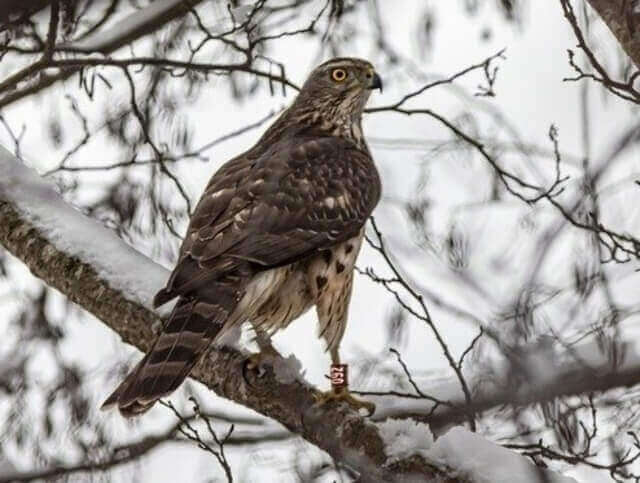
Curiosity about Whether Hawks Eat Turtles
Turtles are not usually thought of as prey for hawks due to their protective shells and slow movement. However, there have been some reports of hawks feeding on turtles in the wild.
This curiosity may stem from a desire to understand more about the relationships between different animals in nature.
It is interesting to observe how predators interact with different prey species and how they adapt their hunting strategies based on factors such as size, speed, and habitat.
As such, this article aims to explore whether hawks commonly eat turtles by delving into the basics of hawk diet and behavior.
By examining scientific studies and wildlife observations, we hope to gain a better understanding of this unique relationship between two very different creatures.
The Basics of Hawk Diet
Hawks are known for their sharp talons and impressive hunting skills. They are carnivorous birds of prey that feed on a variety of animals, including rodents, insects, reptiles, and other birds.
Their diet varies depending on their habitat and available prey. Hawks are opportunistic hunters that use several hunting techniques to capture their prey.
One common method is called “stooping,” where the hawk flies at high speed towards its target before attacking it with its talons.
Another technique is called “perching,” where the hawk waits patiently on a high vantage point for its prey to come within striking distance.
The size of the hawk determines the size of their typical prey.
Smaller hawks such as kestrels feed mainly on insects and small mammals like mice or voles, while larger ones like red-tailed hawks hunt larger mammals like rabbits or squirrels.
Hawks have excellent eyesight, which allows them to spot potential prey from great distances up in the sky.
Once they have spotted their target, they use their speed and agility to catch it by surprise, using their strong feet and sharp talons to grab hold of it.
It’s important to note that not all hawks eat the same things; some species have specific diets based on their habitat or location.
For example, Ospreys primarily eat fish, while Northern Goshawk are known for preying on other birds.
Understanding what hawks typically eat and how they hunt helps us better appreciate these magnificent creatures’ ecological role in maintaining a balanced ecosystem.
In the next section, we’ll explore whether turtles are part of a hawk’s diet repertoire.
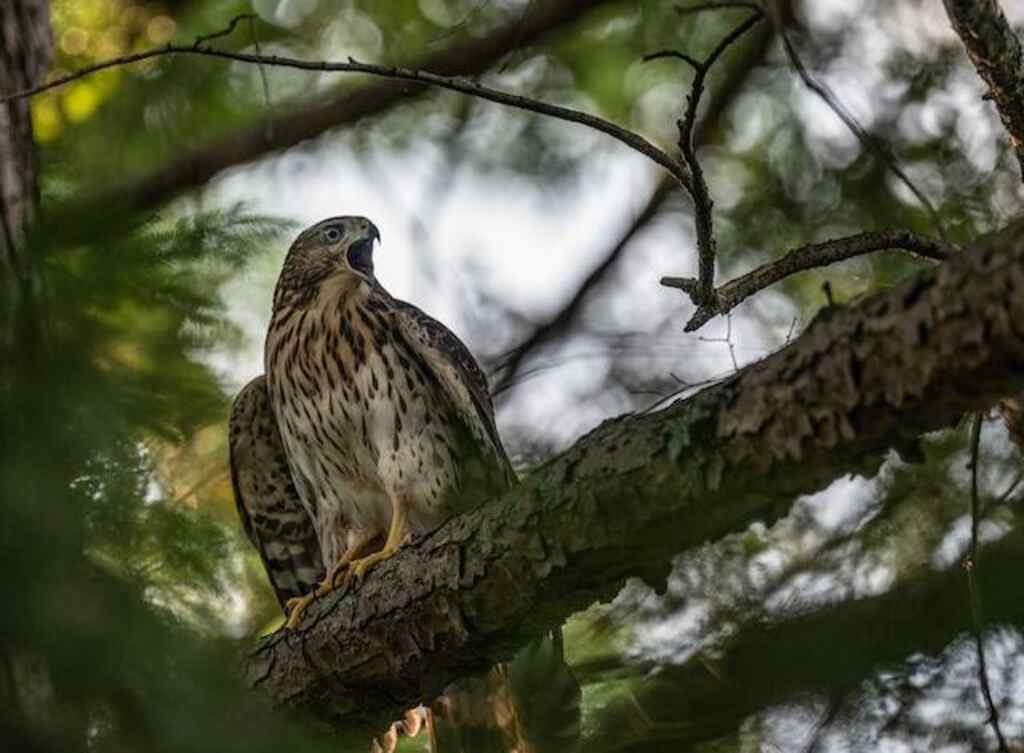
Turtles as Prey for Hawks
Discussion of Turtle Anatomy and Behavior
Turtles are reptiles that belong to the order Testudines. They are known for their hard shells that protect them from predators. The shell is made up of two parts: the carapace, which covers the back, and the plastron, which covers the underside.
Turtles have a unique anatomy that makes them well-suited for living in water and on land. Turtles have a slower metabolism than other animals, which means they do not need to eat as much food.
They also have a unique behavior called basking, where they will rest on logs or rocks to soak up heat from the sun. This allows them to conserve energy and regulate their body temperature.
Analysis of Whether Turtles Are a Viable Food Source for Hawks
Hawks are birds of prey that primarily feed on small mammals like mice and rabbits, as well as smaller birds like sparrows or finches.
However, some species of hawks like Cooper’s hawks or red-shouldered hawks have been known to eat reptiles, including snakes and lizards.
While turtles may not be a common prey item for hawks, they can be an important food source in certain habitats.
For example, if there is a large population of turtles in an area with few other prey options available (like small mammals), then hawks may start hunting turtles more frequently.
In addition, turtles are slow-moving animals that can make easy targets for predators like hawks, who can swoop down quickly from above to catch their prey.
However, cracking open turtle shells can be challenging even for larger hawk species with powerful beaks.
Examples of Hawk Species Known to Eat Turtles
There have been reports of certain hawk species feeding on turtles in various regions around the world. For example, the red-tailed hawk has been observed eating box turtles in Maryland, while red-shouldered hawks have been known to eat painted turtles in Florida.
Another hawk species that is known to eat turtles is the Cooper’s hawk.
These birds of prey have been observed feeding on common snapping turtles in Illinois and painted turtles in California.
It’s worth noting that while these observations are rare, they do suggest that hawks are capable of hunting and consuming turtles as prey when necessary.
Overall, it seems that while hawks may not commonly eat turtles, they are still a viable food source for certain species of hawks that live in areas with high turtle populations.
The unique anatomy and behavior of turtles make them an interesting and important part of the food chain, even if they are not a typical prey item for most birds of prey like hawks.
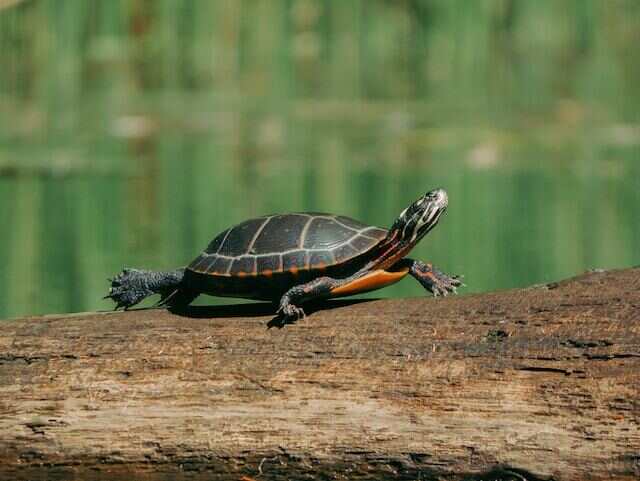
The Pros and Cons of Eating Turtles for Hawks
Advantages of Eating Turtles: Slow Movement and Availability in Certain Habitats
Hawks are known for hunting smaller mammals and birds, but they also eat reptiles. Among these reptiles are turtles. While turtles may not seem like a typical prey for hawks, they do offer some advantages to the bird predators.
One advantage is due to turtles’ slow movements. Most species of turtles are not fast runners, nor can they swim very quickly.
This makes them easy targets for hawks, especially juvenile or sickly individuals who cannot move well.
Moreover, some turtle species live in areas with limited food sources or habitats that allow them no escape from predators.
In these cases, a turtle could be the only available food source for a hawk population that inhabits or migrates through the same area.
Another advantage is that turtles are easy to detect due to their size and coloration.
Hawks have excellent eyesight and can spot their potential prey from high up in the sky. Turtles have unique patterns on their shells making them visible from above even among dense vegetation.
Disadvantages: Difficulty in Cracking Open Turtle Shells
While there are advantages to eating turtles, there are also disadvantages that make it more challenging for hawks as predators.
One such disadvantage is the difficulty of cracking open turtle shells to access the meat inside.
Turtle shells consist of a layer of hard keratin (similar to human nails) and bone underneath, which makes it particularly difficult for birds like hawks to break open without injuring themselves severely in the process.
Additionally, when hawks eat larger-sized turtles, there is always a risk of choking on any bones left behind if not regurgitated properly.
Furthermore, while most turtle species carry diseases like salmonella which can pose health risks if ingested by raptors, the risk of poisoning is far greater when the turtles have been exposed to toxins in their environment.
Should Hawks Eat Turtles?
While hawks can eat turtles, it is not a common prey item for them due to its difficulty and low nutritive value. Hawks must weigh the advantages and disadvantages of hunting turtles before deciding if they are worth pursuing as prey.
The advantages of turtle hunting include slow movement and availability in certain habitats.
While the disadvantages include difficulty in cracking open turtle shells and potential health risks associated with eating diseased or contaminated turtles.
Ultimately, whether or not hawks should eat turtles depends on their individual circumstances and environmental factors.
As predators, hawks must be strategic in choosing their prey to ensure their survival while maintaining a balanced ecosystem.
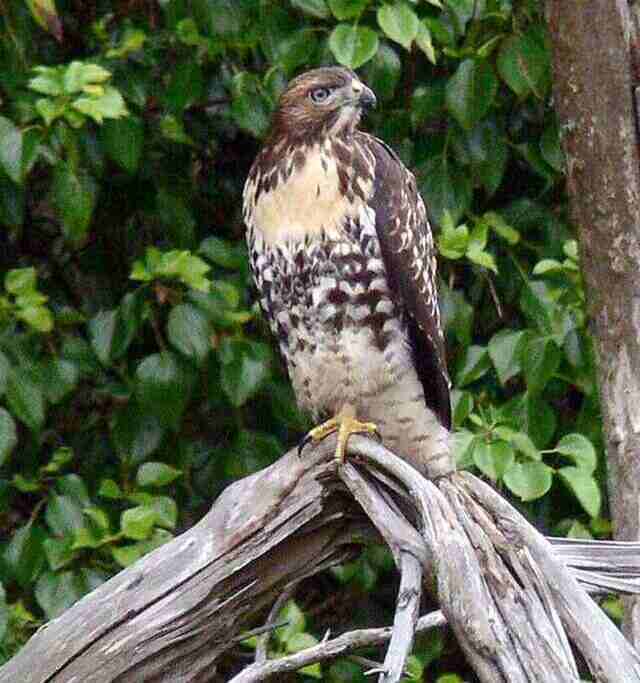
Rare Occurrences: When Hawks Do Eat Turtles
Examples from Scientific Studies or Wildlife Observations
While it is not common for hawks to eat turtles, there have been instances where this behavior has been observed in the wild.
One such example comes from a study published in The Wilson Journal of Ornithology, which reported a case of a Cooper’s hawk preying on an eastern box turtle.
The incident occurred in a suburban area where the turtle was likely wandering across an open lawn, making it an easy target for the hawk.
Another documented case involves a red-shouldered hawk observed consuming a small pond slider turtle.
This observation was made by a wildlife photographer who spotted the hawk perched on a fence post with its prey in its talons.
These rare occurrences provide fascinating insights into the hunting and feeding behavior of hawks.
Discussion on the Circumstances that Lead to this Occurrence
While hawks are not typically known to target turtles as prey, there are certain circumstances that can lead to these rare occurrences. One factor is the availability of suitable prey.
In areas where other prey species may be scarce or difficult to catch, hawks may turn to turtles as an alternative food source. The habitat can also play a role in whether or not hawks will hunt turtles.
For instance, if an area has both ample water sources and high turtle populations, it could make sense for hawks to target them as they would be readily available and relatively easy targets.
In addition, certain species of hawks have been observed eating turtles more frequently than others.
For example, red-shouldered hawks have been documented preying on aquatic turtles more often than other species such as Cooper’s or sharp-shinned hawks.
Overall, while it is uncommon for hawks to eat turtles compared to their typical diet preferences, these rare occurrences provide fascinating insights into the adaptability and resourcefulness of these apex predators.
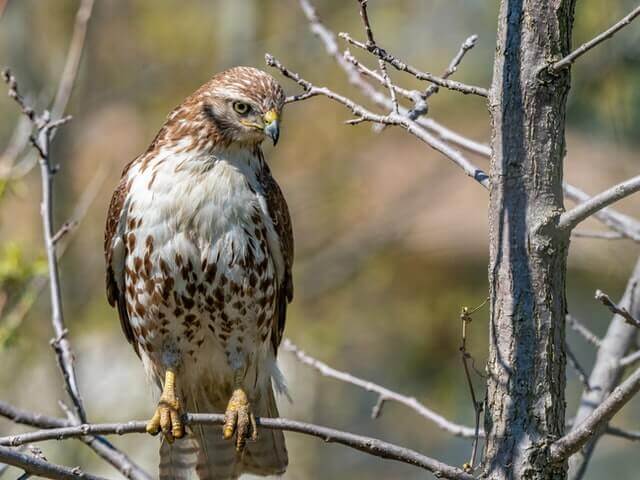
Conclusion
After extensive research, it is clear that while hawks do have the capability to eat turtles, it is not a common occurrence in their diet.
While some species of hawks have been known to occasionally snack on small turtles, they primarily rely on a diet of rodents, birds, and other small prey.
It is important to note that hawks play a vital role in maintaining a healthy ecosystem by controlling the populations of their prey.
Understanding the dietary habits of these birds of prey can help us better understand how they interact with their environment and how we can best protect them.
While interesting to consider, do not expect to see hawks munching on turtles during your next nature hike. Instead marvel at these majestic creatures as they soar through the skies in search of their next meal.
Summary on whether hawks commonly eat turtles
The research conducted shows that although hawks have been observed eating turtles, it is not common for them to include this type of prey in their diet. Hawks mainly consume rodents, birds, insects and reptiles such as snakes and lizards.
While some species do feed on smaller turtles occasionally – this does not appear to be a staple food source for most populations. The availability of turtle prey may depend heavily on specific habitats where they thrive.
For example – certain species can be found throughout wetlands or other areas with slow-moving water bodies, where they are more likely to be hunted by raptors that frequent such areas.
Hawk diets may also vary depending on the region and time of year due to seasonal changes in food availability or migratory patterns for different species.
Final thoughts on the importance of understanding animal diets
Understanding animal diets is essential as it provides valuable information about the relationship between predators and their prey, as well as the role that they play in their respective ecosystems.
By studying the dietary habits of animals, we can also learn about the impact that environmental factors have on these populations.
In addition to providing crucial insights into how to conserve specific species and populations, understanding animal diets also helps us appreciate the incredible diversity of life on earth.
Each species has its unique dietary habits and adaptations, which can be fascinating to study.
Ultimately, understanding animal diets can help us better appreciate and protect our natural environment.
As stewards of this planet, it is our responsibility to ensure that we preserve these ecosystems for generations to come.
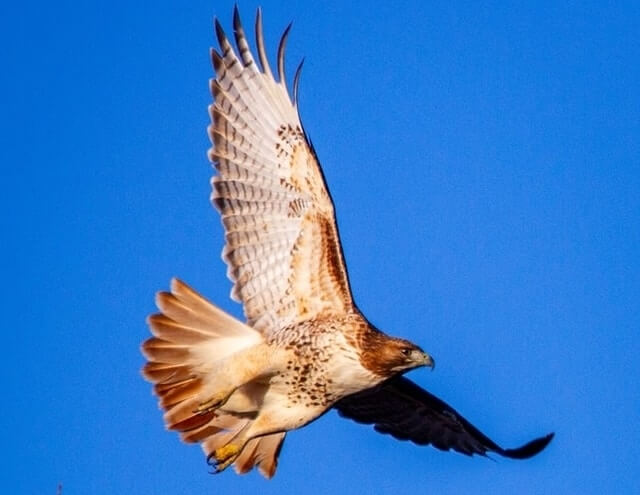
FAQs: Do Hawks Eat Turtles?
Do hawks eat turtles?
Yes, hawks are known to eat turtles. While turtles are not their primary prey, some hawk species, such as the red-tailed hawk and the Cooper’s hawk, have been observed hunting and feeding on small turtles, particularly hatchlings or injured individuals.
Are turtles a significant part of a hawk’s diet?
No, turtles are not a significant part of a hawk’s diet. Hawks primarily feed on small mammals, birds, reptiles, and amphibians. Turtles are usually opportunistic prey when other food sources are scarce or when they come across vulnerable turtles.
How do hawks catch turtles?
Hawks use their sharp talons to catch and grasp turtles. They may swoop down from above or ambush them from perches. The hawk’s powerful beak enables it to tear apart the turtle’s protective shell to access the soft flesh inside.
Can hawks prey on larger turtles?
Generally, hawks target smaller turtles that are easier to capture and handle. Larger turtles have more robust shells and may pose a greater challenge for hawks. However, exceptionally large hawk species, such as the Harpy eagle, may be capable of hunting larger turtles.
Are turtles defenseless against hawks?
Turtles have some defense mechanisms against hawks. Their hard shells provide protection against attacks, making it difficult for hawks to break through. Turtles also have the ability to retract their heads and limbs into their shells, further reducing vulnerability.
Do hawks eat turtle eggs?
Yes, hawks are known to eat turtle eggs when they come across them. Turtles often lay their eggs in sandy or soft soil, which can attract predators like hawks. The eggs provide a nutritious food source for the hawks during their breeding season.
Are there any hawk species specialized in hunting turtles?
No hawk species are specialized exclusively in hunting turtles. While some hawks may have adapted to including turtles in their diet, they still primarily focus on other prey items that are more abundant and easier to catch.
Are hawks a threat to turtle populations?
Hawks are not a significant threat to turtle populations. Their predation on turtles is opportunistic and usually limited to small or vulnerable individuals. Turtles face more substantial threats from habitat loss, pollution, and human activities than from hawk predation.
Can turtles defend themselves against hawks?
Turtles have limited defense capabilities against hawks. Their primary defense is their shell, which provides protection against most predators. However, if a turtle is caught by surprise or injured, it may have a harder time fending off a determined hawk.
How common is it to witness a hawk preying on a turtle?
Observing a hawk hunting and feeding on a turtle is relatively uncommon compared to their more typical prey items. Hawks tend to target smaller and more accessible prey, so witnessing a specific turtle predation event by a hawk is a rarer occurrence.

